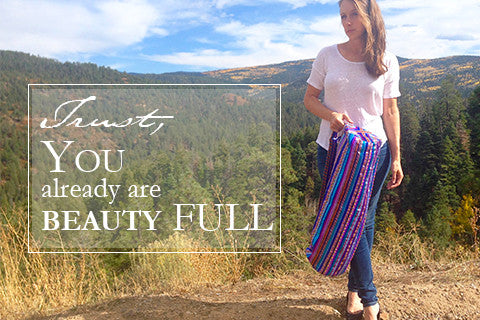Hand Embroidery
Embroidery has long been used by cultures to decorate, create a store of wealth and tell stories. The embroidery styles incorporated into our pieces do all three. We never dictate what design must be embroidered, but instead allow the artisan to find a design that speaks to her and tells the story that she wants to share with the world.
Each embroidery style has a slightly different technique:
Suf (seen on our Gather Purse) - A painstaking process that involves embroidering over a specific count of the fabric's warp (vertical threads) and weft (horizontal threads) to create a beautifully precise satin stitch. Designs are never drawn onto the fabric, but instead imagined and then counted out and executed from the backside.
Suf (seen on our Gather Purse) - A painstaking process that involves embroidering over a specific count of the fabric's warp (vertical threads) and weft (horizontal threads) to create a beautifully precise satin stitch. Designs are never drawn onto the fabric, but instead imagined and then counted out and executed from the backside.
Pakko (seen on our Enlightened Yoga Bag) - Pakko translated means solid or permanent. It is a style made up of very tightly placed chain stitches and is meant to endure time. Designs and motifs are first drawn onto the fabric using mud and needles. The floral motifs are then colored as the artisan meticulously executes her design over the mud sketch.
OUR PARTNER:
Our partner in India is a dynamic non-profit that has over 20 years of experience working with the preservation of artistic traditions. They have worked with over 1000 artisans on projects that encompass elevating the crafts that have existed within their region for centuries, preserving their artistic history through museum development, and ensuring its future though design training for local artisans.
THE COUNTRY:
A relatively new country, India only gained independence in 1947. Since then this magnificent country has seen many twists and turns along its road to development. Even with the immense progress it has made, India continues to have high levels of poverty and currently is home to one-third of the world’s extreme poor.
OUR PARTNER:
Our partner in India is a dynamic non-profit that has over 20 years of experience working with the preservation of artistic traditions. They have worked with over 1000 artisans on projects that encompass elevating the crafts that have existed within their region for centuries, preserving their artistic history through museum development, and ensuring its future though design training for local artisans.
THE COUNTRY:
A relatively new country, India only gained independence in 1947. Since then this magnificent country has seen many twists and turns along its road to development. Even with the immense progress it has made, India continues to have high levels of poverty and currently is home to one-third of the world’s extreme poor.

Embroidery artisans at work, learning new design processes in a local design school.

